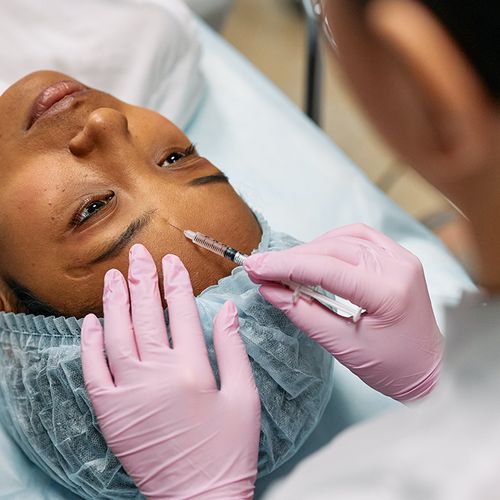When you think of facial aging, wrinkles and sagging skin come to mind, but new research finds that skin isn't the only thing that ages.
Over time, so do the facial bones, which lose volume and recede, making you look even older.
And if crow's feet and jowly cheeks weren't enough, the bones of the eye socket gradually widen, the brow bone recedes and the jawbone becomes less defined.
If you think of the facial bones as "scaffolding" for facial tissue and skin, the bone loss can contribute to that drooping, deflated look, explained Robert Shaw, Jr., MD, chief resident in the division of plastic surgery at the University of Rochester Medical Center in Rochester, New York, and author of a recent study.
The Research
Dr. Shaw and his colleagues did CT scans of the facial bones in 120 men and women aged 20 to 40, 41 to 64, and 65 and older. They then created three-dimensional reconstructions of the scans, which they used to take detailed measurements of the facial bone structure.
With age, the scans showed that the bones that make up the eye sockets recede, enlarging the sockets. A few less millimeters of bone for the soft tissues of the face to hold on to adds to the appearance of excess or droopy skin around the eyes, Dr. Shaw said.
Similar losses of volume happen in the bones of the middle face, including the brow bone, nose and upper jaw. The loss of bone can also reduce the angle of the lower jaw, which is why those with a strong jawline in their youth may not be so well-defined in old age, Dr. Shaw said.
"A nice, strong jawline is something people see as being youthful, but as you get older the angle gets more blunted," Dr. Shaw said.
And sorry, ladies—while the most pronounced bone loss happened for men when they were 65 and older, the process starts earlier in women. Women's facial skeletons between 41 and 64 looked much different than their facial bones did between the ages of 20 and 40, according to the study.
The bone loss helps explain why getting a simple facelift, or skin tightening, won't ever make you look like your 20-year-old self, Dr. Shaw said.
The study was published in the journal Plastic and Reconstructive Surgery.
You Can’t Go Back In Time
"The original thought was that skin goes through changes, such as a loss of elasticity and fat, so the primary approach to facial rejuvenation was skin tightening procedures," Dr. Shaw said. "But a lot of faces never looked like they did when they were younger. Patients bring in pictures and say they want to go back to that look, but they can never really go back to that look just by tightening their skin alone. If there are changes to those underlying structures it's going to change the appearance of how the skin looks."
For those seeking facelifts, plastic surgeons can use fillers, can move fat from one part of the body to the face or use facial implants to make up for the lost bone, Dr. Shaw said.
"It's not ever possible to bring someone back to how they looked when they were 20 years old, but adding volume back to the face can improve results for some patients," Dr. Shaw said.
Throughout your life, bone is constantly being made and reabsorbed. Aging may cause the creation of new bone to work a little less well, perhaps causing more bone to be absorbed than is created, Dr. Shaw said.
It stands to reason. With aging, bone density can also decrease, leading to osteoporosis, which affects women more often than men.
Expert Reaction
Phillip Haeck, MD, president of the American Society of Plastic Surgeons, called the study a "milestone" for its careful documentation of facial bone changes.
"Aging is multi-factorial. There are all these different factors that come into play in how you look at 40, 50 or 60," Dr. Haeck said. "The things that affect it are genetics, external factors such as sun damage and nicotine use. Then there is plain old loss of volume of the soft tissues and bone."
See the Problems with Eyelash Drug Before Using
Latisse, originally sold under a different name to treat glaucoma, is FDA-approved to create longer and darker eyelashes. It costs up to $120 for a one-month supply and can take months to make lashes longer and darker. The effects continue only as long as the drug is used.
Downsides: Latisse can darken eyelids and make eye color darker-turning blue, green or hazel eyes brown. It can cause eye redness and itching. Latisse maybe useful for people who have lost eyelashes due to chemotherapy or illness, but for most people, mascara is less risky and much cheaper.
